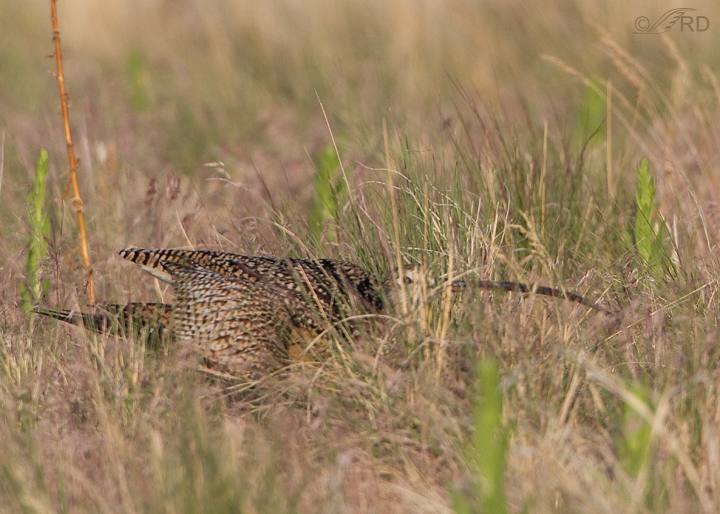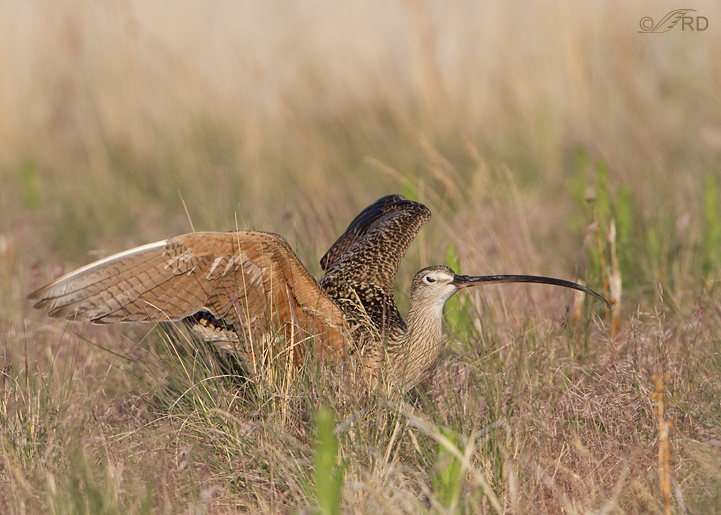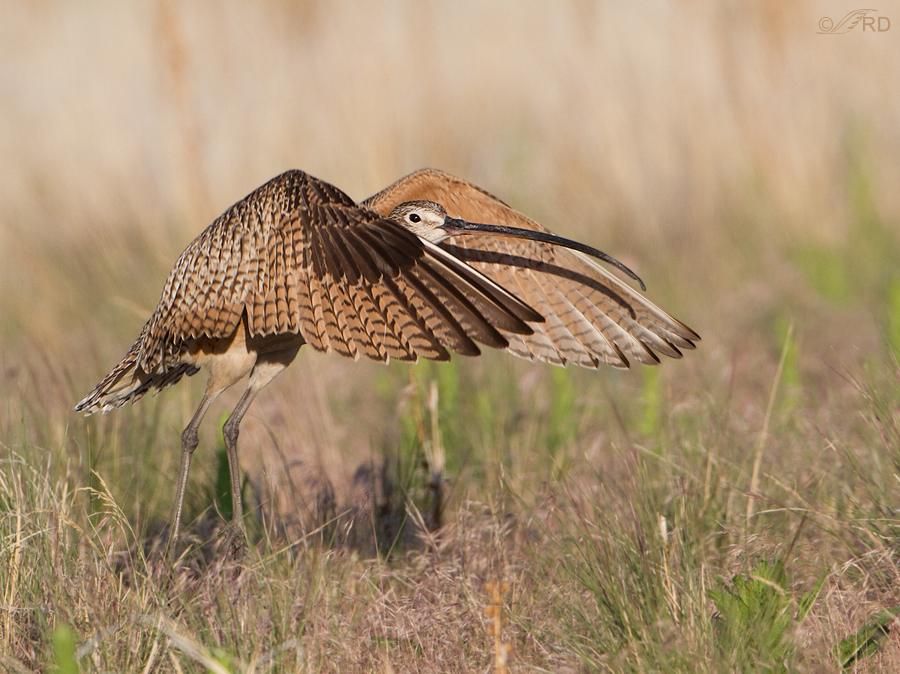When Long-billed Curlews take off they have a little trick they use to get airborne quickly. This is our largest North American shorebird and in addition to their extremely long bill they have very long legs. Since this is a grassland species it would often be very difficult to get a running start at take-off through the tall vegetation so they use their long legs to full advantage by crouching so low that their belly often touches the ground and then they spring into the air by quickly straightening those very long legs (jumping).
This can be problematic for the photographer wishing to get take-off shots because this is a large bird and they explode into the air so quickly that you tend to either cut off part of the bird or lose focus on the subject at the most critical point of the take-off. But knowing and anticipating their behavior can give you a better chance at a quality shot or two.
These three images from yesterday on Antelope Island are sequential in a quick burst at take-off. The first two are of crappy quality but I include them to illustrate my point.

Here the curlew has crouched as low as it can get prior to take-off. I temporarily lost sharp focus on the head because of the foreground vegetation and because of camera movement as I moved my aim upwards in an attempt to get the entire bird in the frame as it lifted off.

In the second shot of the burst, focus has locked onto the bird again as it begins to rise above the grasses.

1/2500, f/7.1, ISO 640, 500 f/4
And focus stayed locked on as the bird erupted from the vegetation. Because I had moved my aim upwards and slightly to the right I didn’t clip any body parts and there was room in the frame to the right to crop to a composition I liked. Yes, I did clip the wings in some of the other shots in the burst but I consider it a success to get even one nice image in a situation like this. Take-off shots aren’t easy because so darn many things have to go right to get a quality image but knowing the behavior of your subject can drastically improve your odds of getting a few “keepers”.
And I do like this shot, though with the head poking out between the wings it certainly is unconventional and may not have broad appeal. Probably a matter of taste…
Ron


Awesome sequence! Which focusing point do you use for these type of shots? The single rounded box with center dot, or the rounded box with smaller boxes on each side forming a cross? Sorry for the kindergarten description
Mike, In a situation like this I often use the second choice you describe – I think it’s called AF Point Expansion where you select one AF point and the four adjacent AF points are also selected. Since the take-off is so fast and unpredictable as to angle I find it too difficult to keep a single AF point on the bird. If there’s nothing in the foreground to grab the focus it works pretty well.
Wow, great teaching moment!
Love your choice of words here Tana. Brings back memories…
What an incredible beak. And yes, the length of those legs. I am grateful that your knowledge of their behaviour allowed you to get these shots to share with us.
Elephant’s Child – yes, that beak is amazing. Interestingly though, after you get used to it in the adult it’s really quite disconcerting to see the much shorter beak of the juvenile.
Personally, I think it is a great shot, Ron, because of the difficulty in getting it.
Thanks Bob.